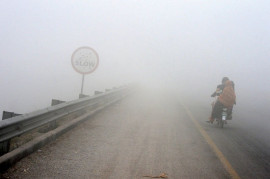
The weakening of the Taliban presence allowed some signs of the government’s presence to re-emerge. Hundreds of Afghan police officers guarding outposts along the main road allowed traffic to flow again, while crews began clearing the irrigation canals that run along the road. For a number of years, roads were dominated by the Taliban who used roadside bombs to discourage people from using them. Lack of maintenance of the irrigation system affected agriculture and crop productivity. These improvements made it possible for people to return to work.
Development aid provided by the Americans and their allies to the southern provinces also helped. Helmand received the most aid per capita of any province in the country in 2010. Aid projects to pave roads, dredge canals, construct schools and clinics improved economic life in the area by providing thousands of new jobs.
Will this success be maintained now that the American pull-out is underway? The answer to the question depends on a number of factors. The most important of these is the manner and speed of the pull-out. It is unlikely that having achieved some success in the south, the Americans will abandon the area in order to satisfy a political timetable of their own. The Afghan forces may be much more developed than was the case six years ago but they were still not strong enough to prevent the Taliban from re-entering the area as they had done in 2005, when the Americans withdrew some of their forces in order to fight the war in Iraq.
The United States and Nato aimed to build up the Afghan Army and the police to a force of 395,000 by 2014, the year by which all foreign troops were to leave the country. But at issue was the competence and loyalty of the Afghan force. Loyalty became a real concern once some soldiers trained by the US and Nato turned their weapons on their benefactors. According to another NYT report, “since March 2009, at least 57 people including 32 American troops have been killed in at least 19 attacks in which Afghan service members had turned their weapons on coalition forces. Another 64 were wounded. More than half of the casualties in the first five months of this year, signalling an escalation in the number and intensity of the attacks. But while the Taliban often take credit for these attacks, Nato officials say the majority of the episodes stem from disagreements and arguments that escalate into violence.”
Also troubling for the government was the heavy loss of innocent lives as result of Taliban activity and the military effort by the United States and its allies. According to the United Nations, May 2011 was the deadliest month for Afghan civilians since it began to keep count in 2007. It estimated civilian deaths during the month at 368. “The majority of the casualties, 82 per cent, were caused by Taliban and other militants, while 12 per cent were caused by Nato troops and Afghan force; in six per cent of the cases, it was not clear who was responsible.” The Taliban continued to target security forces as well as those whose beliefs differed from their own. For instance, on June 11, they attacked two buses that were carrying members of two families who were travelling to a shrine in Kandahar province to pray for the health of a sick child.
The uneasy relationship between Afghan President Hamid Karzai and the American government became even more uncomfortable as Washington inched closer to making the decision about the number of troops it planned to pull out of the country starting July 1, 2011. On July 18, reports said Karzai “appeared to have crossed a line” when, in “a rambling speech” to a youth convention in Kabul, he accused the United States and other western allies of using his country for their own purposes. He asserted that they take away more money than give, pollute Afghanistan’s environment and ‘dishonour’ the Afghan people. This was not the first attack by him on the US and its Nato allies. According to reports, in an “emotional speech” in the eastern city of Asadabad, he called for Nato and the United States to stop military operations in Afghanistan; officials later issued a clarification, saying he was referring only to operations that caused civilian casualties. At a news conference in May, he threatened to denounce Nato as occupiers if they did not stop air attacks that caused civilian casualties. That was in response to an air strike in Helmand province that was aimed at Taliban insurgents but killed several civilians, including women and children. On at least two occasions, most recently in April, Mr Karzai has threatened at closed-door meetings of parliament to join the Taliban, according to published accounts.”
Given this background, Afghanistan is not likely to move on a smooth road once the Americans begin to pull back.
Published in The Express Tribune, July 4th, 2011.

1734939576-0/Untitled-(85)1734939576-0-165x106.webp)
1734937729-0/akbar-(1)1734937729-0-165x106.webp)
1728297472-0/Fousey-(1)1728297472-0-165x106.webp)
1734937562-0/Untitled-(84)1734937562-0-165x106.webp)











1734778885-0/Untitled-(10)1734778885-0-270x192.webp)

COMMENTS (4)
Comments are moderated and generally will be posted if they are on-topic and not abusive.
For more information, please see our Comments FAQ